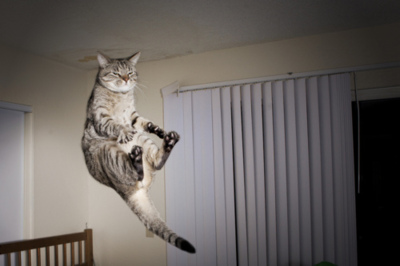by Uri Friedman
 Scientists at CERN, the famous Geneva-based physics lab, have just called into question one of the most hallowed equations in physics: E = MC2. Scientists, the AP explains, have clocked subatomic particles called neutrinos traveling faster than the speed of light. The BBC summarizes the magnitude of the finding, if true: "The speed of light is the Universe's ultimate speed limit, and the entirety of modern physics--as laid out in part by Albert Einstein in his theory of relativity--depends on the idea that nothing can exceed it."
Scientists at CERN, the famous Geneva-based physics lab, have just called into question one of the most hallowed equations in physics: E = MC2. Scientists, the AP explains, have clocked subatomic particles called neutrinos traveling faster than the speed of light. The BBC summarizes the magnitude of the finding, if true: "The speed of light is the Universe's ultimate speed limit, and the entirety of modern physics--as laid out in part by Albert Einstein in his theory of relativity--depends on the idea that nothing can exceed it."
Understandably, reports are using adjectives like "baffled" and "astounded" to describe the scientists. "This would be such a sensational discovery if it were true that one has to treat it extremely carefully," a theoretical physicist at CERN named John Ellis tells the AP. CERN found that a neutrino beam fired from a particle accelerator near Geneva to a lab 454 miles away in Italy traveled 60 nanoseconds faster than the speed of light, a difference that is statistically significant even with the margin of error. The lab's researchers have checked and rechecked their work and are still asking scientists in the U.S. and Japan to confirm the results.
What hangs in the balance? Oh, just the laws of nature and our understanding of the universe.
via:
 Scientists at CERN, the famous Geneva-based physics lab, have just called into question one of the most hallowed equations in physics: E = MC2. Scientists, the AP explains, have clocked subatomic particles called neutrinos traveling faster than the speed of light. The BBC summarizes the magnitude of the finding, if true: "The speed of light is the Universe's ultimate speed limit, and the entirety of modern physics--as laid out in part by Albert Einstein in his theory of relativity--depends on the idea that nothing can exceed it."
Scientists at CERN, the famous Geneva-based physics lab, have just called into question one of the most hallowed equations in physics: E = MC2. Scientists, the AP explains, have clocked subatomic particles called neutrinos traveling faster than the speed of light. The BBC summarizes the magnitude of the finding, if true: "The speed of light is the Universe's ultimate speed limit, and the entirety of modern physics--as laid out in part by Albert Einstein in his theory of relativity--depends on the idea that nothing can exceed it."Understandably, reports are using adjectives like "baffled" and "astounded" to describe the scientists. "This would be such a sensational discovery if it were true that one has to treat it extremely carefully," a theoretical physicist at CERN named John Ellis tells the AP. CERN found that a neutrino beam fired from a particle accelerator near Geneva to a lab 454 miles away in Italy traveled 60 nanoseconds faster than the speed of light, a difference that is statistically significant even with the margin of error. The lab's researchers have checked and rechecked their work and are still asking scientists in the U.S. and Japan to confirm the results.
What hangs in the balance? Oh, just the laws of nature and our understanding of the universe.
via:
















